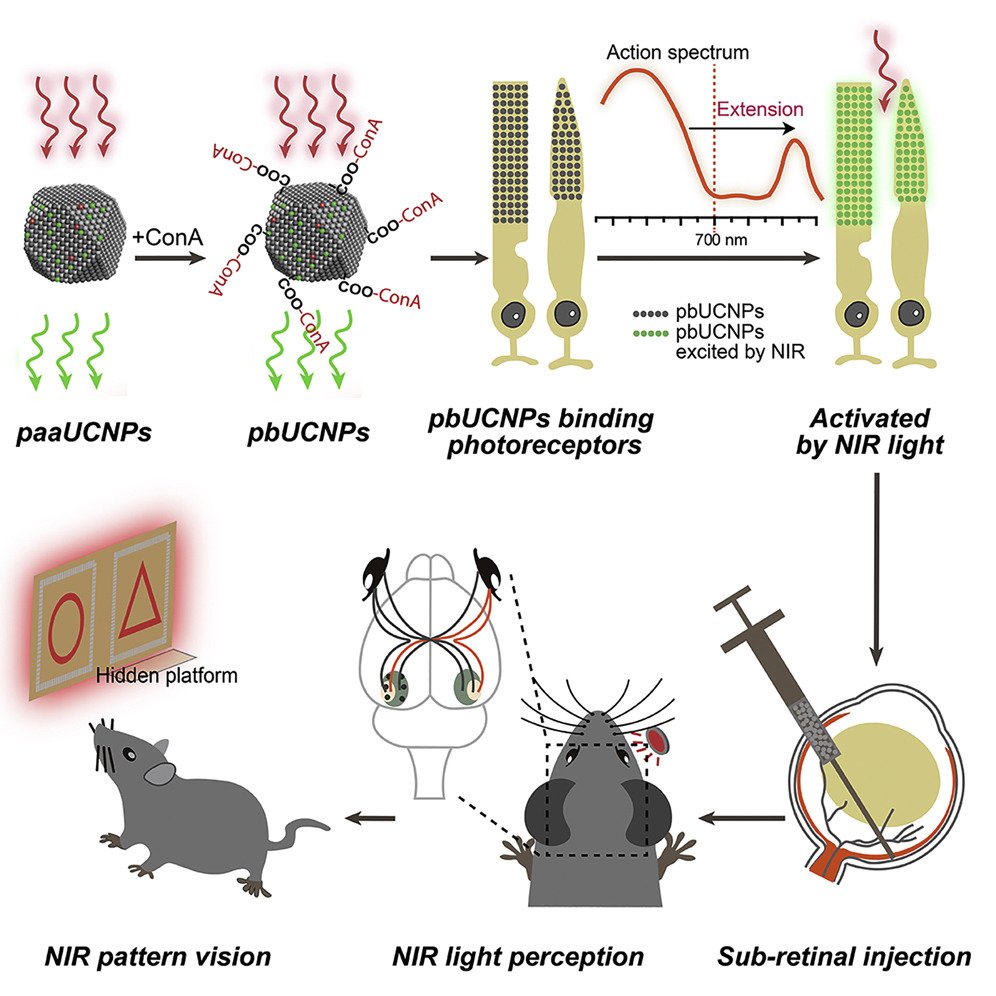Scientists have succeeded in making a solution that, when injected into the eyes of mice, allows them to see infrared light as well as the visible light they already see. To implement this, the scientists used nanotechnology. The best part about the research is that there were little to no side effects.
The researchers reported their findings of allowing mice to see infrared light in the journal Cell last Friday. This research is particularly interesting because it means that in the future, our vision could be enhanced in the same way. For up to ten weeks, the mice were able to see infrared light even during the day, and were also able to distinguish between optical and infrared light, making differences between different shapes.

Humans, as well as other mammals, can only see visible optical light, being able to see only through a certain range of wavelength, which is often presented as the range of the rainbow colors. Infrared light has a longer wavelength and it surrounds us, yet we’re unable to see it. Humans, animals and other objects can emit infrared light through their heat, while objects can also reflect it.
“The visible light that can be perceived by human’s natural vision occupies just a very small fraction of the electromagnetic spectrum,” senior author Tian Xue of the University of Science and Technology of China said in a statement. “Electromagnetic waves longer or shorter than visible light carry lots of information.”
“When light enters the eye and hits the retina, the rods and cones—or photoreceptor cells—absorb the photons with visible light wavelengths and send corresponding electric signals to the brain,” Gang Han at the University of Massachusetts Medical School who participated in developing the nanotechnology said. “Because infrared wavelengths are too long to be absorbed by photoreceptors, we are not able to perceive them.”
The nanoparticles can be attached to the photoreceptor cells while acting like tiny transducers of infrared radiation. When the infrared light comes in contact with the retina, nanoparticles capture the wavelengths and emit shorter wavelengths to match the visible light range.
Often used for experiments, mice were also used to test the nanoparticles, being mammals that also can’t see infrared light. Mice that were injected with the nanoparticles showed unconscious physical reactions to infrared light detection, while those that received only a buffer solution couldn’t see the infrared light. The team conducted a series of mazes to see how well the mice would respond to seeing infrared light.
Sometimes, there were side effects in which cloudy corneas appeared, but disappeared within a week. Scientists believe this was caused by the injection process itself and not the nanoparticles, given that the mice that received the buffer solution also experienced the same effects.
“In our study, we have shown that both rods and cones bind these nanoparticles and were activated by the near infrared light,” Xue said. “So we believe this technology will also work in human eyes, not only for generating super vision but also for therapeutic solutions in human red color vision deficits.”
“In the future, we think there may be room to improve the technology with a new version of organic-based nanoparticles, made of FDA-approved compounds, that appear to result in even brighter infrared vision,” says Han.
Researchers believe that aside from allowing mice to see infrared light, more experiments can be tweaked in favor of humans seeing the same. Humans use more cones than rods in their central vision compared to mice, so that the emission spectrum could be tuned to be appropriate for human eyes.












